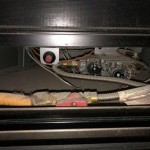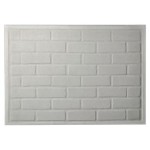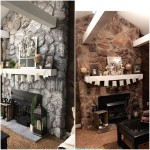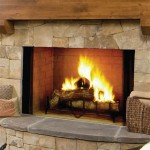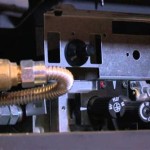How To Add A Wood Burning Fireplace To An Existing Home
Adding a wood-burning fireplace to an existing home can be a significant undertaking, but one that can greatly enhance the ambiance, value, and heating efficiency of the property. This project necessitates careful planning, adherence to local building codes, and often, the involvement of qualified professionals. Understanding the various aspects of installation, from initial assessment to final inspection, is crucial for a successful and safe fireplace addition.
The decision to install a wood-burning fireplace should be approached with a thorough understanding of the implications involved. Considerations include cost, space requirements, fuel availability, required maintenance, and local regulations concerning emissions and wood burning. A well-informed decision will ensure the fireplace meets the homeowner's needs and expectations.
Assessing the Feasibility and Planning the Installation
The first step involves evaluating the structural feasibility of adding a fireplace. This includes determining whether the existing foundation can support the weight of the fireplace and chimney. A structural engineer may be required to assess the load-bearing capacity of the floor and foundation. The location of the fireplace is another critical factor. Considerations include proximity to existing structural elements, access to the exterior for chimney construction, and the desired aesthetic effect within the room. Adequate clearances from combustible materials are essential for safety and code compliance.
Planning the installation involves selecting the type of fireplace and chimney system. Fireplaces are broadly categorized into masonry fireplaces and prefabricated fireplaces. Masonry fireplaces are traditionally constructed from brick or stone and require a substantial foundation. Prefabricated fireplaces, also known as zero-clearance fireplaces, are factory-built units that can be installed with reduced clearances from combustible materials. These prefabricated units are often more cost-effective and easier to install than masonry fireplaces.
The chimney system is a critical component of the fireplace. It must be properly sized and constructed to ensure efficient venting of combustion gases. Chimneys can be either masonry or prefabricated. Prefabricated chimneys are typically made of stainless steel and are available in various sizes and configurations. The chimney must extend at least three feet above the highest point of the roof within ten feet to ensure adequate draft. Local building codes often specify chimney height requirements.
Obtaining the necessary permits is a crucial step in the planning process. Building permits are typically required for fireplace and chimney installations. The permit application process may involve submitting detailed plans and specifications to the local building department. It is essential to comply with all applicable building codes and regulations to ensure the safety and legality of the installation. Failure to obtain the required permits can result in fines and delays.
Selecting qualified contractors is essential for a successful fireplace installation. Contractors should be licensed and insured and have experience installing fireplaces and chimneys. Obtaining multiple bids from different contractors is recommended to ensure competitive pricing. Checking references and reviewing past projects can help in selecting a reputable and qualified contractor.
Preparing the Site and Constructing the Fireplace
Before construction begins, the site must be properly prepared. This may involve removing existing flooring, walls, or other obstructions. Protecting surrounding areas from dust and debris is essential. Dust barriers and floor coverings can help minimize disruption to the rest of the home. Adequate ventilation is also necessary to prevent the buildup of dust and fumes during construction.
For masonry fireplaces, the foundation must be poured and allowed to cure before construction can begin. The foundation should be sized to support the weight of the fireplace and chimney. The fireplace is then constructed using brick, stone, or concrete block. A firebox is constructed within the fireplace to contain the fire. The firebox should be lined with firebrick to protect the surrounding masonry from heat damage. A smoke chamber is located above the firebox to collect and direct the smoke into the chimney. A damper is installed at the base of the chimney to control airflow.
For prefabricated fireplaces, the installation process is typically simpler than that of masonry fireplaces. The fireplace is typically placed on a non-combustible hearth. The chimney is then connected to the fireplace and extended through the roof. The chimney must be properly supported and secured to the building. The fireplace and chimney are typically encased in a decorative surround made of wood, stone, or other materials.
Proper insulation is crucial for both masonry and prefabricated fireplaces. Insulation helps to prevent heat loss and protect surrounding combustible materials from heat damage. Insulation should be installed around the fireplace and chimney, especially in areas where they pass through walls or ceilings. The type of insulation used should be appropriate for the application and comply with local building codes.
Electrical connections may be required for certain fireplace features, such as blowers or lighting. A qualified electrician should perform all electrical work to ensure safety and code compliance. Wiring should be properly sized and protected from heat damage. A dedicated circuit may be required for the fireplace.
Completing the Installation and Ensuring Safety
Once the fireplace and chimney are installed, the surrounding area should be finished. This may involve installing drywall, painting, and adding decorative trim. The hearth should be properly sized and constructed to protect the floor from sparks and embers. Clearances from combustible materials should be maintained according to local building codes.
A final inspection by the local building department is typically required before the fireplace can be used. The inspector will verify that the installation complies with all applicable building codes and regulations. Any deficiencies must be corrected before the fireplace can be approved for use. A certificate of occupancy may be required before the fireplace can be used.
Proper ventilation is essential for safe fireplace operation. The room containing the fireplace should have adequate ventilation to provide combustion air. A carbon monoxide detector should be installed in the room to alert occupants to the presence of carbon monoxide. The fireplace should be operated according to the manufacturer's instructions.
Regular maintenance is necessary to ensure the safe and efficient operation of the fireplace. The chimney should be inspected and cleaned annually by a qualified chimney sweep. The firebox should be cleaned regularly to remove ashes and creosote. The damper should be inspected and lubricated as needed. Any cracks or other damage to the fireplace or chimney should be repaired promptly.
Safe wood-burning practices are essential for preventing fires and reducing emissions. Only seasoned, dry wood should be burned. Wet or unseasoned wood produces more smoke and creosote. The fireplace should never be overloaded with wood. The damper should be fully open when the fireplace is in use. The fireplace should never be left unattended while burning. Embers should be allowed to burn completely before leaving the fireplace unattended. Ashes should be properly disposed of in a metal container with a tight-fitting lid.
Homeowners should familiarize themselves with local regulations concerning wood burning. Some areas have restrictions on the type of wood that can be burned or the times of day when wood burning is allowed. Some areas also have regulations concerning the emissions from wood-burning appliances. Compliance with these regulations is essential for protecting air quality and public health.

Adding A Fireplace To Existing Home Where For Fireplaces

How To Install A Fireplace Insert Ask This Old House

Your Home Doesn T Have A Fireplace And You Want To Add One

Fireplace Additions Answers On

How To Install A Wood Burning Fireplace Insert Fireplaces Direct Learning Center

Fireplace Insert Guide Fireplaces Direct Learning Center

Remodel Or Upgrade Your Existing Fireplace The Kernel Burner

Your Guide To Wood Stove Installation Full Service Chimney

Fireplace Insert Installation Wood Burning Inserts

Do You Need A Wood Fireplace Insert
Related Posts

